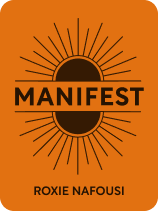

This article is an excerpt from the Shortform book guide to "Manifest" by Roxie Nafousi. Shortform has the world's best summaries and analyses of books you should be reading.
Like this article? Sign up for a free trial here.
What is visualization manifestation? How does simply imagining that you already have what you want help you make it a reality?
Visualization is a powerful manifestation tool because your brain can’t tell the difference between what’s real and what you visualize. According to Roxie Nafousi, the author of Manifest, the key to making visualization work is to imagine what you want in painstakingly vivid detail.
Here’s how to practice visualization manifestation.
Create a Detailed Mental Image of Your Desires
Nafousi argues that the first principle of visualization manifestation is to create a clear, detailed mental image of what you want. This step is crucial to manifesting because our brains respond to mental images as if they were real. In other words, imagining exactly what you want will trick your brain into believing that you already have it. You’ll then experience positive emotions and emit high vibrations that will actually attract that thing into your life.
(Shortform note: Rhonda Byrne popularized visualization in The Secret. She explains, like Nafousi, that the process helps attract your desires due to your brain responding as if your visualizations were reality. While Nafousi doesn’t offer any scientific evidence to support this assertion, Byrne explains that scientists observed this effect when conducting tests on Olympians. When these athletes visualized performing their events, their brains sent signals to their bodies as if the event were actually happening, and their muscles responded as if they were in action.)
The Process of Creating a Clear Mental Image
To create a clear mental image of what you want, Nafousi recommends following a few steps.
First, include as many details as you can about your desire. For example, if you want to move to a neighborhood near the beach in a foreign country, start by imagining the details of this neighborhood—how far apart are the houses? Are there children playing outside? Is it grassy? Can you see the ocean?
Next, Nafousi argues, imagine how you’ll feel once you’ve achieved your desire. For example, you may feel anticipation to meet up with your new friends, peaceful to be in your sunny new home, grateful to have the ocean right outside, and loved because you’re surrounded by positive people. Focus on these emotions and try to feel them.
(Shortform note: In The Miracle Morning, Hal Elrod presents a similar method for visualization, explaining that you must be detailed about your desires and imagine yourself achieving them. However, while Nafousi mainly recommends including sight- and emotion-based details in your vision, Elrod recommends imagining all of your senses—sight, touch, taste, smell, hearing, and feeling—to get the best manifestation results. For example, not only should you imagine details like what the neighborhood looks like, who lives there, and how you feel there, but you should also consider things like how the grass feels under your toes, the smell of the sea air, the sound of the ocean, and so on.)
Then, Nafousi recommends, identify how this future version of yourself differs from who you are now. How do they think, feel and act? What habits do they have? What are their relationships like? How do they handle difficult situations? And so on. For example, maybe future you lives with their partner, starts their day with yoga every morning, gets to work by 8 a.m., and enjoys an hour of self-care before bed each night.
(Shortform note: In The Secret, Rhonda Byrne also recommends identifying differences between your future self and your current self so you know what to strive for. However, she adds an additional recommendation that will help your desired future and future self to materialize: Act as if your desires for the future have already happened. For example, if your future self lives with their spouse and attends morning yoga classes, make an extra key and create closet space for your future spouse, and clear your morning schedule so you can attend a yoga class when you find one. These actions show that you truly believe in your ability to manifest—therefore, they’ll emit positivity and attract your desires even faster.)
Use Meditation to Create Your Mental Images
Nafousi recommends rehearsing the above process through meditation. Every few days, sit down for 10 to 15 minutes in a quiet, peaceful place and rehearse the previous steps to create a detailed imagining of what you want to manifest.
(Shortform note: While Nafousi recommends meditating on your visualizations every few days for 10 to 15 minutes, in The Secret, Rhonda Byrne suggests performing daily meditations. These meditations can last anywhere from three to 10 minutes to begin with, and you can increase their length over time. Byrne notes that not only will frequent meditation help you manifest your visions, but it’ll also help you gain control over your thoughts and emotions. This emotional control will allow you to regularly maintain positive thoughts and emotions that attract positivity while avoiding negative thoughts and emotions that attract negativity.)

———End of Preview———
Like what you just read? Read the rest of the world's best book summary and analysis of Roxie Nafousi's "Manifest" at Shortform.
Here's what you'll find in our full Manifest summary:
- How to create your dream life through the power of thought
- Why manifestation is not just about picturing something you desire
- How to effectively manifest by altering your thoughts, behaviors, and emotions






